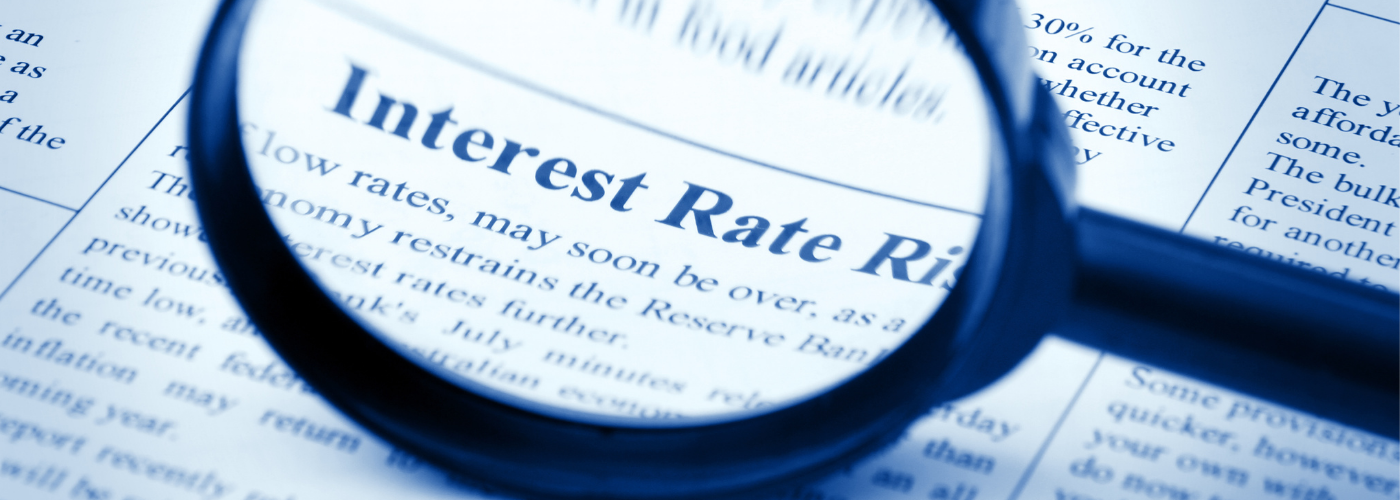Despite war in Eastern Europe and the uncertainty it brings, the US Federal Open Market Committee (FOMC) had no option but to lift the federal funds rate for the first time since 2018. The members “pulled the trigger”, lifting the rate by 25-basis points to a range of 0.25%–0.50% after inflation continued to surge in February. Noted hawk, James Bullard, the president of the Federal Reserve Bank of St Louis became the first dissenting vote since September 2020, calling for a higher 0.5% rate rise.
Federal Reserve Chairman Jerome Powell left markets in no doubt about what to expect for the remainder of 2022. There are six further FOMC meetings scheduled, and all are “live meetings”—in layman’s terms it means rate changes are possible at every meeting. In addition, quantitative tightening (QT) or the reining in of the Fed’s US$9 trillion balance sheet is on the agenda “at a coming meeting”, most likely in June.
US equity markets reacted positively, perhaps relieved Bullard did not get his way, but probably comforted by Powell’s comments at the press conference that “the economy was very strong, with healthy growth expected, despite higher oil prices and the uncertainty from the Russian invasion of Ukraine” and indicated there were no looming recession risks. The bond market was more cautious, with yields spiking at the short end as the 30-year yield edged marginally lower. The yield curve continued to flatten with the 2/30-year spread in to 25 basis points and the 5/30 into 28 basis points. The Treasury Inflation Protected Securities (TIPS) yield curve is much steeper, as the market prices in higher near-term inflation, but not remaining elevated longer term.
The economic projections of individual members changed from the December meeting, with the implications of the Russian/Ukraine situation the major factor affecting the 2022 forecasts. The median GDP growth expectation for 2022 is now 2.8%, down from 4.3%. Forecasts for 2023 and 2024 are unchanged at 2.2% and 2.0% respectively. The core PCE inflation projection for 2022 is now 4.1%, up from 2.7% in December. Officials also upgraded their 2023 and 2024 forecasts to 2.6% and 2.3% respectively, up from 2.3% and 2.1% previously. The unemployment rate projection is unchanged for 2022 and 2023 at 3.5%.
While Powell said, “the economy was very strong, with healthy growth expected”, there appears to be some disagreement among FOMC members whose median projections do not align with the rhetoric. Real GDP growth of 2.2% in 2023 and 2.0% in 2024 is hardly blowing the lights out. Between 1948 and 2021 GDP growth averaged 3.14%.
The rate rise follows February’s US Consumer Price Index released on 10 March. While it was in line with expectations it was the fastest annual increase since February 1974, with the year-on-year (y/y) headline rate up from 1.7% in February 2021 to 7.9%. The y/y core rate increased from 1.3% in February 2021 to 6.4%, the largest increase in the annual rate since April 1975. Those were recessionary days.
As the Fed hikes rates, US financial markets are now facing pressure on several fronts: sharply rising inflation; a deterioration in the wealth effect as the Nasdaq, the market’s flag bearer, moves from correction to bear market; the war in Eastern Europe; and the start of a tightening cycle for monetary policy. This is a very high wall of worry. Stagflation may well be an optimistic assessment.
US 4Q21 GDP growth of 5.6% was a strong exit for a tumultuous year. It is likely 1Q22 growth will be below 4Q21’s, perhaps meaningfully. So, the Fed is tightening monetary policy as GDP growth is slowing. This is not textbook stuff, but surging inflation requires some urgent remedial action given the prolonged in action has left the Fed meaningfully behind the yield curve.
The market expectation of several interest rate increases in 2022, has resulted in a sharp rise at the short end of the yield curve and the curve flattening meaningfully. The 2-year/10-year yield spread contracting from 85 basis points on 3 January to 25 points on 16 March. The 2/30-year spread in from 125 to 52 and the 5/30-year from 67 to 28. These moves question the strength and resilience of the economic growth outlook. The Russian invasion of Ukraine has only added to the debate.
Despite the pull back in commodity prices over the past week, a meaningful rise in the cost of energy, including oil, gas, LNG, and thermal coal will have widespread implications on both global inflation and economic growth. Europe will be the worst affected of the major economies and the emerging economies are likely to also splutter.
Debelle moving to greener pastures
Deputy governor Guy Debelle rang the bell on his 25-year career at the Reserve Bank of Australia (RBA) on 10 March and will leave without any fanfare on 19 March. According to informed sources, Governor Philip Lowe has lost the architect of the central bank’s monetary response to the COVID-19 pandemic. While perhaps not the outright owner, Debelle’s fingerprints were all over quantitative easing, the Term Funding Facility, and Yield Curve Control.
Debelle is joining Fortescue Future Industries (FFI), a subsidiary of Fortescue Metals Group as its chief financial officer, becoming another tree in Andrew Forrest’s expanding forest. As an aside, the last FFI I can recall was from my early analyst days—Frozen Food Industries, the maker of the culinary delight the Chicko Roll and perhaps responsible for some emissions.
The resignation comes at a time when the RBA is starting to entertain the possibility of the first interest rate rise since 7 October 2009, when the rate was increased from 3.00% to 3.25%. Lowe and the board have no experience raising rates or winding back the $640bn balance sheet, something that needs to be done to stop risk asset prices rising further. The income/wealth gap is already uncomfortably wide and being exacerbated by surging headline (real) inflation.
The last paragraph of every FOMC statement, which follows the decision on monetary policy, lists the voting record of every member. Decisions are mostly unanimous, although the word is not used. When it is not, there follows a second sentence: Voting against the action were or was.
In the interests of transparency, isn’t it time the final paragraph of the RBA’s statement had similar disclosure? I don’t believe all voting RBA members have always been in lockstep with the governor. When the 2-year bond yield hit 1.31% on 15 March the spread between it and the official cash rate of 1.21% is the widest in my memory. That indicates how far the RBA is currently behind the yield curve.
Is the trimmed mean the right inflation benchmark?
Financial markets monitor inflation data closely, now even more so than at any time over the past 20 years. In Australia, the Consumer Price Index is the norm, sliced and diced into headline and core. The core is what is left after peeling off the impact of food and energy categories.
In the US, the Fed’s favoured measurement is the Personal Consumption Expenditure Index (PCE), largely for two reasons: It has a broader scope and better reflects how consumers change what they buy to account for rising prices.
In Australia, the RBA prefers the trimmed mean published by the Australian Bureau of Statistics, which “excludes large price rises and falls”. What is excluded is not disclosed, but presumably food and energy. It is also worth noting it excludes the bottom and top 15% of price changes, leaving the middle 70%. Excluded items vary from month to month depending on what goods/services are rising and falling.
The 4Q21 trimmed mean appears to have excluded “the largest rise in new dwelling prices since September 2021”. In 3Q21 childcare was exempted. The more categories exempted the further away the measurement becomes from reality. What consumers pay 24/7 is what is relevant. The US PCE seems more attuned to reality.
Household real spending power is being ravaged as headline inflation continues to rise and with wages growth well below 3%, negative jaws are at work. Household spending, the driver of GDP growth, is increasingly at risk.
AGL merry go round
It seems everyone has a better solution for decarbonising AGL Energy’s coal-fired power generation fleet than the company’s board. “Superior” plans are being proffered by Brookfield Asset Management, Atlassian’s Mike Cannon-Brooks, New South Wales Treasurer Matt Kean, and even ex-governor of the Bank of England Mark Carney, who also happens to be vice-chair of Brookfield Asset Management. They are all being cheered on by a supportive and uncritical adjective-wielding press.
AGL board’s rejection of “groundbreaking” bids from the Brookfield-Cannon-Brooks consortium for the “world’s biggest decarbonisation project” has earned the ire of Kean. The Treasurer is going to make sure “AGL is able to meet its obligations to its counterparties, including the remediation costs it will be required to incur.” While admirable, I would hope the state’s soaring debt levels would be higher priority than veiled threats to the AGL board. The NSW government should not be so blasé about ownership of the state’s major energy generator passing into international hands.
New South Wales taxpayers are liable for all remediation costs associated with the four coal fired power stations prior to their sale in 2012 and 2013. This includes Eraring, Vales Points, Liddell, and Bayswater. The new owners became responsible for costs when they took control. AGL Energy owns Liddell and Bayswater.
On 17 February when Origin Energy announced the Eraring power station will close in 2025, Kean said, “I am disappointed by today’s announcement and this is a difficult day for the Lake Macquarie community,”
The bidders may talk up their green credentials but don’t forget, they also want a profit.
Meanwhile, as some push for the transition to renewable energy to be fast tracked to 2030, respected CEOs at the Australian Financial Review Business Summit warned of the dangers of rushing the process. Morgan Stanley’s CEO James Gorman says “This is a multi-decade transition” while Macquarie’s Shemara Wikramanayke is more expansive—“On the one hand it’s a massive challenge that we have to meet, and we just don’t have the solutions to get there for 2050 at the moment across all the sectors. On the other hand, if we shut off conventional sources of energy, transport, etcetera, we’re going to have all sorts of disruption, and the worry with that is that we lose the mandate for the transition.”
Victoria is committing to having 20% of its energy from offshore wind by 2030. Given our record in delivering major land-based infrastructure projects on time and on budget, I suggest 2030 will be a difficult target for infrastructure in the Bass Strait. Don’t shut down Loy Yang too early, especially not in winter.
CIMIC not a done deal
Hochtief will struggle to get to 90% of CIMIC by the 11 April closing date of its $22 cash bid for the outstanding shares in the company. After acquiring 10.3 million or 80% of the shares traded on the day after the bid was announced, active on-market competition above that level has slowed the flow dramatically.
When the offer documents were released Hochtief’s relevant interest had increased to 83.68% on 9 March. To attain the 90% threshold where compulsory acquisition is triggered, Hochtief needs to own 280,166,666 shares. By14 March, the relevant interest had increased to 261,636,313 shares or 84.05%, including both on-market purchases and acceptances of the offer.
I recall Downer EDI’s takeover offer for Spotless Group at $1.15 per share back in April 2017. After extending the offer eight times, Downer finally acquired 87.8% of the capital of Spotless. After initially rejecting the offer, the Spotless board reluctantly recommended the bid after Downer’s relevant interest reached 67.3%, but also acknowledged “that some shareholders with a greater appetite for risk, longer investment horizon or more aggressive investment strategies, may wish to continue to hold their Spotless shares.”
Downer finally paid $1.70 per share in August 2019, 48% above the $1.15 original offer. Not a bad annual return of near 24%.
I am certainly not suggesting CIMIC is another Spotless, but there is no hurry to sell shares on market or accept the off-market offer. I will keep shareholders informed of Hochtief’s progress.
Declaration: My superannuation fund holds CIMIC shares.
 Morningstar
Morningstar





